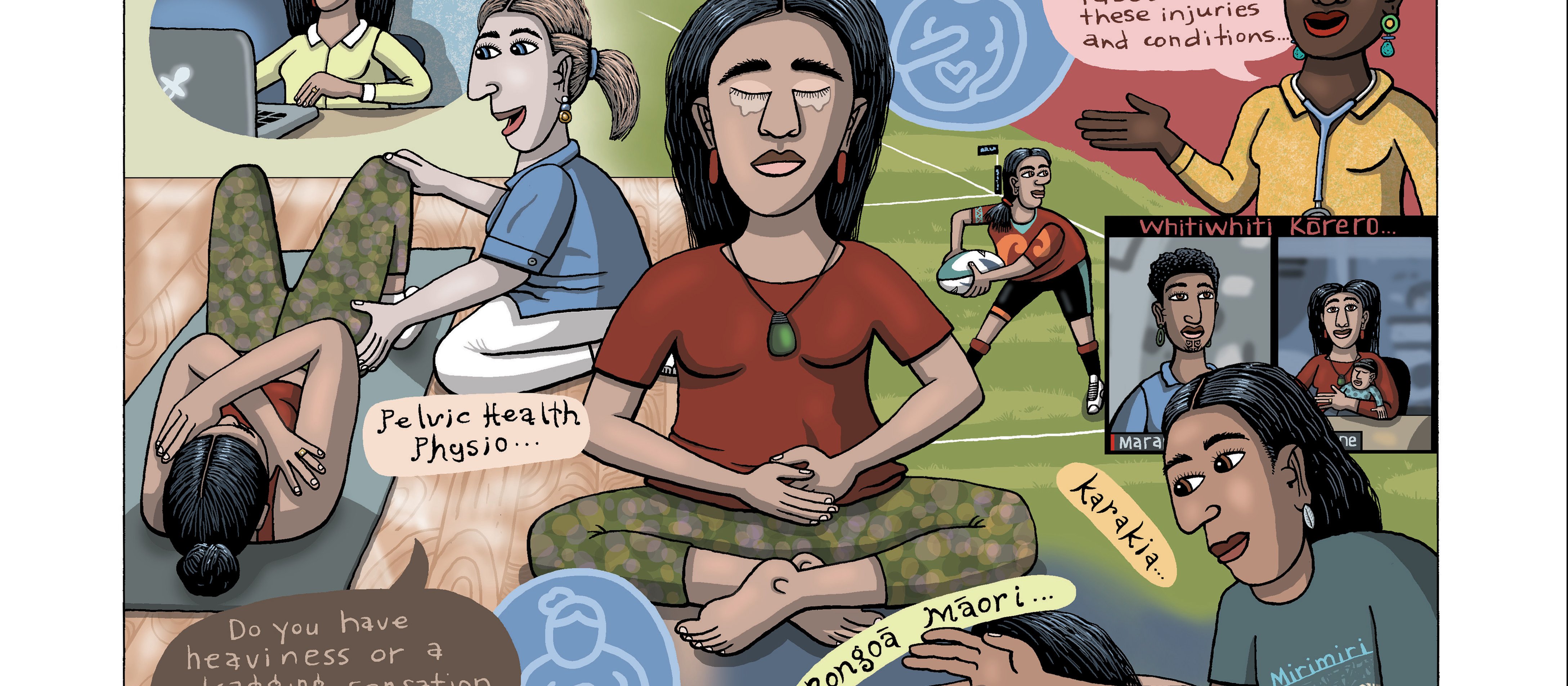Respiratory physician Lutz Beckert considers chronic obstructive pulmonary disease management, including the prevention of COPD, the importance of smoking cessation and pulmonary rehabilitation, and the lifesaving potential of addressing treatable traits. He also discusses the logic of inhaler therapy, moving from single therapy to dual and triple therapy when indicated, as well as other aspects of management
How to Treat: Maternal birth injuries - assessment answers
How to Treat: Maternal birth injuries - assessment answers

Below are the answers to the assessment from How to Treat: Maternal birth injuries
Record your score using the Capture button at the bottom of this page – simply add your score in the the Capture Note box that appears when you click on Capture. You can view your Capture Record at any time and even download a .csv file for your own records (more details about how Capture works can be found here).
Achieving 8 or more correct answers will allow you to claim the CPD credits/hours allocated to this course.
GPs: This “How to treat” has been endorsed by the RNZCGP and has been approved for up to 1 credit for continuing professional development purposes (1 credit per learning hour). To claim your CPD credits, log in to your Te Whanake dashboard and record this activity under the appropriate learning category.
Nurses: The College of Nurses Aotearoa (NZ) has endorsed this “How to treat” for 1 hour of professional development following completion of this assessment (CNA107).
1. List three injuries now covered by ACC funding as maternal birth injuries.
- Anterior vaginal wall prolapse, posterior vaginal wall prolapse, or uterine/apical prolapse
- Coccyx fracture, subluxation or dislocation
- Levator ani muscle avulsion
- Obstetric anal sphincter injury tears, or tears to the perineum, labia, vagina, vulva, clitoris, cervix, rectum, anus or urethra
- Obstetric fistula (including vesicovaginal, colovaginal and ureterovaginal)
- Obstetric haematoma of pelvis
- Postpartum uterine inversion
- Pubic ramus fracture
- Pudendal neuropathy
- Ruptured uterus during labour
- Symphysis pubis joint capsule or ligament tear
2. Which statement regarding eligibility for coverage under the Accident Compensation (Maternal Birth Injury and Other Matters) Amendment Act 2022 is correct?
b. For those who gave birth on or after 1 October 2022, injuries registered at the time of birth or any time postpartum may be covered
3. What is a tear injury affecting the perineal muscles and fascia but not involving the anal sphincter?
b. Second-degree perineal tear
4. Which statement regarding levator ani muscle avulsions is correct?
b. Diagnosis of levator ani muscle avulsion can take up to 12 months to confirm
5. Most people with pelvic health issues due to maternal birth injuries will bring this up in postpartum consultations. True or False?
b. False
6. Symptoms of birthing injuries are also eligible for ACC coverage. True or False?
a. True
7. What symptoms or consequences of maternal birth injuries should you screen for at each postpartum check-up (and during future consultations)?
d. All of the above (anal and urinary incontinence, pelvic organ prolapse, pelvic pain and sexual dysfunction)
8. What is the best course of action for most maternal birth injuries diagnosed in primary care?
c. Referral onwards to a pelvic health physiotherapist
9. Which TWO statements regarding maternal birth injuries and their psychological effects are correct?
a. Counselling, rongoā Māori and psychological support are covered by ACC if they relate to an approved birth injury claim
d. When a physical birth injury occurs, it is highly likely that psychological distress will occur
10. Name one traditional rongoā Māori healing service also covered by ACC as a rehabilitation option.
Examples include: mirimiri (bodywork), whitiwhiti korero (support and advice), karakia (prayer), rākau rongoā (native flora herbal preparations)
Remember to record your score using the Capture button below




![Barbara Fountain, editor of New Zealand Doctor Rata Aotearoa, and Paul Hutchison, GP and senior medical clinician at Tāmaki Health [Image: Simon Maude]](/sites/default/files/styles/thumbnail_cropped_100/public/2025-03/Barbara%20Fountain%2C%20editor%20of%20New%20Zealand%20Doctor%20Rata%20Aotearoa%2C%20and%20Paul%20Hutchison%2C%20GP%20and%20senior%20medical%20clinician%20at%20T%C4%81maki%20Health%20CR%20Simon%20Maude.jpg?itok=-HbQ1EYA)
![Lori Peters, NP and advanced health improvement practitioner at Mahitahi Hauora, and Jasper Nacilla, NP at The Terrace Medical Centre in Wellington [Image: Simon Maude]](/sites/default/files/styles/thumbnail_cropped_100/public/2025-03/2.%20Lori%20Peters%2C%20NP%20and%20advanced%20HIP%20at%20Mahitahi%20Hauora%2C%20and%20Jasper%20Nacilla%2C%20NP%20at%20The%20Terrace%20Medical%20Centre%20in%20Wellington%20CR%20Simon%20Maude.jpg?itok=sUfbsSF1)
![Ministry of Social Development health and disability coordinator Liz Williams, regional health advisors Mary Mojel and Larah Takarangi, and health and disability coordinators Rebecca Staunton and Myint Than Htut [Image: Simon Maude]](/sites/default/files/styles/thumbnail_cropped_100/public/2025-03/3.%20Ministry%20of%20Social%20Development%27s%20Liz%20Williams%2C%20Mary%20Mojel%2C%20Larah%20Takarangi%2C%20Rebecca%20Staunton%20and%20Myint%20Than%20Htut%20CR%20Simon%20Maude.jpg?itok=9ceOujzC)
![Locum GP Helen Fisher, with Te Kuiti Medical Centre NP Bridget Woodney [Image: Simon Maude]](/sites/default/files/styles/thumbnail_cropped_100/public/2025-03/4.%20Locum%20GP%20Helen%20Fisher%2C%20with%20Te%20Kuiti%20Medical%20Centre%20NP%20Bridget%20Woodney%20CR%20Simon%20Maude.jpg?itok=TJeODetm)
![Ruby Faulkner, GPEP2, with David Small, GPEP3 from The Doctors Greenmeadows in Napier [Image: Simon Maude]](/sites/default/files/styles/thumbnail_cropped_100/public/2025-03/5.%20Ruby%20Faulkner%2C%20GPEP2%2C%20with%20David%20Small%2C%20GPEP3%20from%20The%20Doctors%20Greenmeadows%20in%20Napier%20CR%20Simon%20Maude.jpg?itok=B0u4wsIs)
![Rochelle Langton and Libby Thomas, marketing advisors at the Medical Protection Society [Image: Simon Maude]](/sites/default/files/styles/thumbnail_cropped_100/public/2025-03/6.%20Rochelle%20Langton%20and%20Libby%20Thomas%2C%20marketing%20advisors%20at%20the%20Medical%20Protection%20Society%20CR%20Simon%20Maude.jpg?itok=r52_Cf74)
![Specialist GP Lucy Gibberd, medical advisor at MPS, and Zara Bolam, urgent-care specialist at The Nest Health Centre in Inglewood [Image: Simon Maude]](/sites/default/files/styles/thumbnail_cropped_100/public/2025-03/7.%20Specialist%20GP%20Lucy%20Gibberd%2C%20medical%20advisor%20at%20MPS%2C%20and%20Zara%20Bolam%2C%20urgent-care%20specialist%20at%20The%20Nest%20Health%20Centre%20in%20Inglewood%20CR%20Simon%20Maude.jpg?itok=z8eVoBU3)
![Olivia Blackmore and Trudee Sharp, NPs at Gore Health Centre, and Gaylene Hastie, NP at Queenstown Medical Centre [Image: Simon Maude]](/sites/default/files/styles/thumbnail_cropped_100/public/2025-03/8.%20Olivia%20Blackmore%20and%20Trudee%20Sharp%2C%20NPs%20at%20Gore%20Health%20Centre%2C%20and%20Gaylene%20Hastie%2C%20NP%20at%20Queenstown%20Medical%20Centre%20CR%20Simon%20Maude.jpg?itok=Z6u9d0XH)
![Mary Toloa, specialist GP at Porirua and Union Community Health Service in Wellington, Mara Coler, clinical pharmacist at Tū Ora Compass Health, and Bhavna Mistry, specialist GP at Porirua and Union Community Health Service [Image: Simon Maude]](/sites/default/files/styles/thumbnail_cropped_100/public/2025-03/9.%20Mary%20Toloa%2C%20Porirua%20and%20Union%20Community%20Health%20Service%20in%20Wellington%2C%20Mara%20Coler%2C%20T%C5%AB%20Ora%20Compass%20Health%2C%20and%20Bhavna%20Mistry%2C%20PUCHS%20CR%20Simon%20Maude.jpg?itok=kpChr0cc)